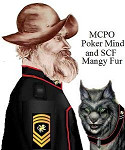Henry Brown wrote:SNIPP
I'd say the CoG getting the improved steel making process has much bigger military implications than them getting the steam engine concept. I think the current war is only going to last another 2 or 3 years. So my assumptions are based on a relatively short timeframe. Within this timeframe, I think that it would be possible to exploit the knowledge of steel making. Which would lead to better rifles and artillery before war's end. And it would also boost the numbers of rifles and artillery that can be produced.
I don't think that the knowledge of steam engines can really be exploited within the likely timeframe of the current war. As you allude to, having the theory of steam engines is not enough. You also need practical knowledge of how to build and operate them. So in order to gain this kind of hands-on-experience, the CoG is going to have to design and build some prototypes. I estimate this might take 6 months to a year.
But even if the CoG has a working steam engine, by itself it does no good. They would also have to design and build a ship to use the steam engine. And that ship would also have to incorporate armor. And right now, the CoG has no experience with ironclads. So that will take more time. Then they have to actually build enough of them to make a difference in the military situation. Unless something changes with regard to the current military situation and prolongs the war, I just don't think the CoG is going to have enough time to do all this.
Well, one problem faced by Carnegie and Bethlehem was the simple fact, that the Harvey and Krupp
patents on armor plate steel did not disclose the information necessary to conduct the Harvey/Krupp
process. Both sets of patents, for instance, failed to disclose the crucial steps of tempering the plates before carburizing and hardening them as well as of annealing the plates afterwards. Tempering and annealing were crucial because they gave the armor a fibrous and tough structure that prevented cracking upon the impact of a shell.
In the absence of this deep structure, hardened plates were little better than compound iron-steel plates.
Another story: in October 1897 the Bethlehem and Carnegie companies sent a team to Krupp's factory at Essen. What impressed the Americans most was the German's obsession with controlling each step of the armor manufacture. From initial melting to final trimming, all plates were manufactured unter identical conditions. The heating furnaces bristled with pyrometers to monitor the temperature. The armor ship was packed with machine tools. Most important, a small army of well-trained workers, supervised by competent, educated engineers, continually monitored the furnaces to achieve to necessary uniformity.










 and, Mangy Fur the Smart Alick Spacecat.
and, Mangy Fur the Smart Alick Spacecat.